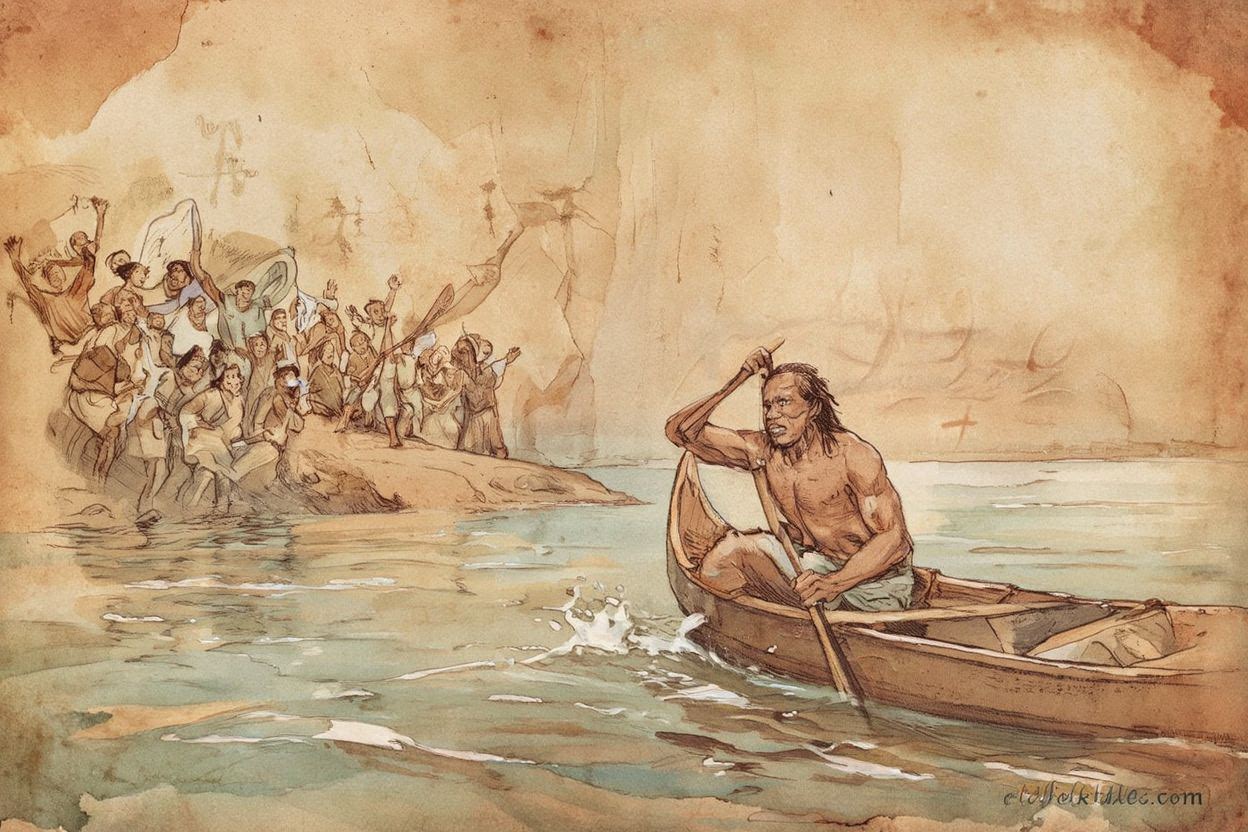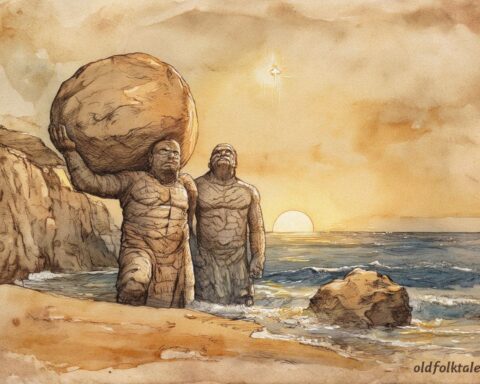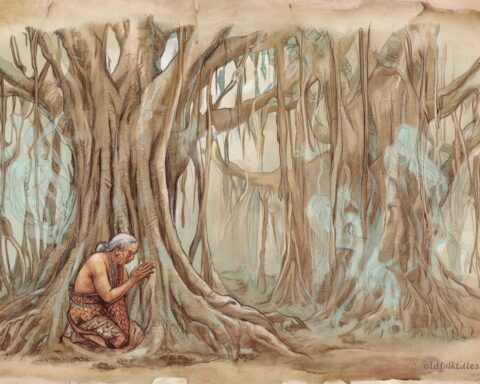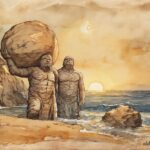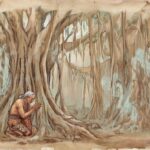Long ago, when Guam was a land of villages ruled by wise and brave chiefs, there lived a man named Gadao, the great leader of Inarajan. He was known throughout the island for his incredible strength, his cleverness in speech, and his deep sense of fairness. The people loved him because he used his power not for pride or greed, but to protect the weak and to keep peace among the clans.
Stories say that Gadao’s strength was unlike that of any other man. His arms could lift canoes from the sea, his legs could carry him across valleys in a single stride, and his spirit was as unshakable as the cliffs of the island itself. Yet he was humble. He worked alongside his people, fished with them, and helped repair their homes. It was this mixture of strength and kindness that made him a true chief not just in title, but in heart.
One day, a traveler from the north named Malaguana came to Inarajan. He had heard of Chief Gadao’s strength and wished to test it. Malaguana was proud and believed himself to be the strongest man in all of Guam. He arrived in the village carrying a great spear and wearing a crown of shells that shimmered in the sunlight.
He called out, “I am Malaguana of Agat! I challenge the chief of this village to prove who is the stronger man.”
The people murmured among themselves. Gadao stepped forward, calm and smiling. He welcomed the traveler with food and drink, for it was the Chamorro way to offer kindness before conflict. Then, after sharing a meal, he agreed to the challenge.
To settle their rivalry, the two men decided on three trials, feats that would test their strength, skill, and endurance.
For the first feat, they would race across the land. From the riverbank to the hilltop they ran, their feet pounding the earth. Malaguana’s speed was great, but Gadao ran with the rhythm of the island’s wind. The people cheered as he reached the hill first, standing tall and unshaken.
For the second feat, they agreed to test their strength by breaking coconuts with their bare hands. Malaguana crushed one and then another, showing his power. Gadao, smiling gently, took two coconuts and pressed them together until they cracked open in his palms. The crowd gasped, for no one had ever seen such power.
For the third feat, they chose to test their will through a contest of endurance on the sea. The two men climbed into a canoe and began to paddle in opposite directions. The canoe creaked and groaned under their force, neither willing to yield. Finally, with a mighty roar, the canoe split in two. Gadao calmly paddled his half back to shore, while Malaguana, exhausted, drifted away with the current.
The people shouted in amazement. Chief Gadao had not only proven his strength but also his wisdom and restraint. He could have humiliated his rival, yet he chose peace. He helped Malaguana to shore and shared food with him again, saying, “Strength without honor is weakness. True power is in knowing when to fight and when to forgive.”
The legend of Chief Gadao spread across Guam. He became a symbol of balance, a leader strong in body, wise in spirit, and kind in heart. His story was carved into the walls of a cave near Inarajan, now known as Gadao’s Cave. The ancient pictographs there are said to show his mighty deeds, painted by the hands of his people to remember his courage for generations to come.
Even today, Gadao’s name is spoken with respect. The youth of Guam are taught that leadership is not about domination but about service. They are told to remember Chief Gadao whenever they stand before a difficult task, for his story reminds them that true greatness comes from humility and the strength to do what is right.
The legend also reminds the people of Guam of the importance of unity. Gadao’s three feats were not simply about competition but about harmony between strength, wisdom, and community. Each victory was not for himself but for the lesson it carried. His heart, like his island, was strong because it was rooted in love for the people and the land.
In the quiet of Gadao’s Cave, where ancient drawings still rest in stone, visitors say they can feel his presence. The air is cool and heavy with history. The lines and symbols tell a story that words cannot tell the story of a man whose legacy endures through time. And as the waves crash on the shores of Inarajan, they whisper his name, carrying his legend from one generation to the next.
Moral Lesson
The story of Chief Gadao teaches that true strength lies in wisdom and compassion. A great leader protects, guides, and serves others with humility and courage.
Knowledge Check
1. Who was Chief Gadao in Chamorro tradition?
He was the legendary chief of Inarajan known for his great strength, wisdom, and leadership.
2. How many feats of strength did Chief Gadao perform?
He performed three great feats to prove his power and character.
3. What lesson did Gadao teach his rival Malaguana?
He taught that true strength comes with honor, and peace is greater than pride.
4. Where can the story of Gadao be found today?
It is remembered in Gadao’s Cave, where ancient pictographs depict his legendary feats.
5. What is the main theme of this story?
Leadership guided by strength, humility, and responsibility.
6. Where does this story originate?
It originates from the Chamorro people of Guam in the Mariana Islands.
Source: CHamoru Legends: A Gathering of Stories by Teresita Lourdes Perez (2019), University of Guam Press.
Cultural Origin: Chamorro (Guam, Mariana Islands)
